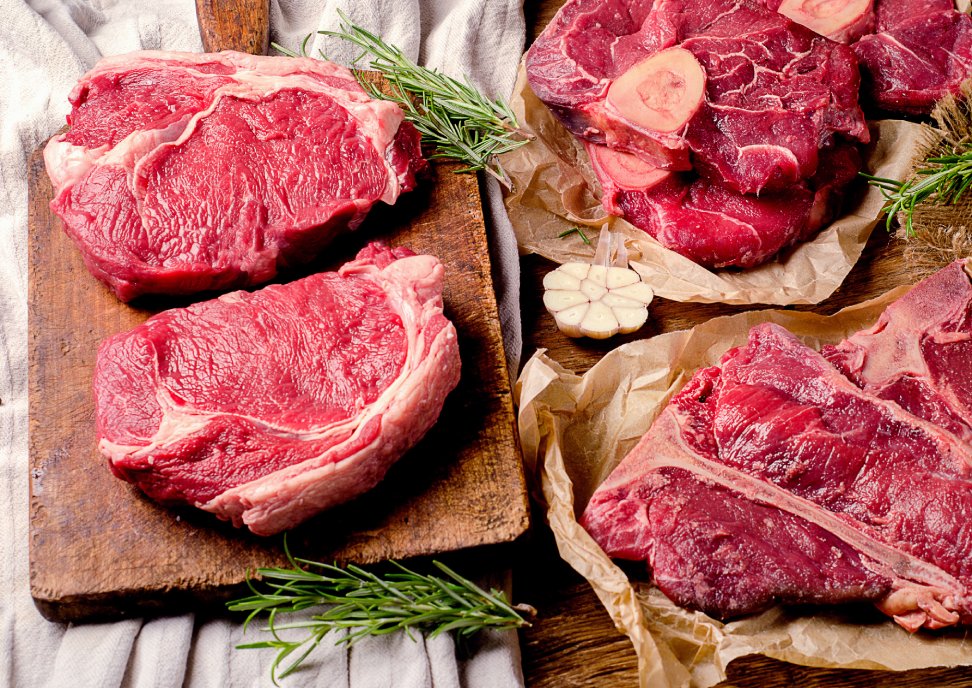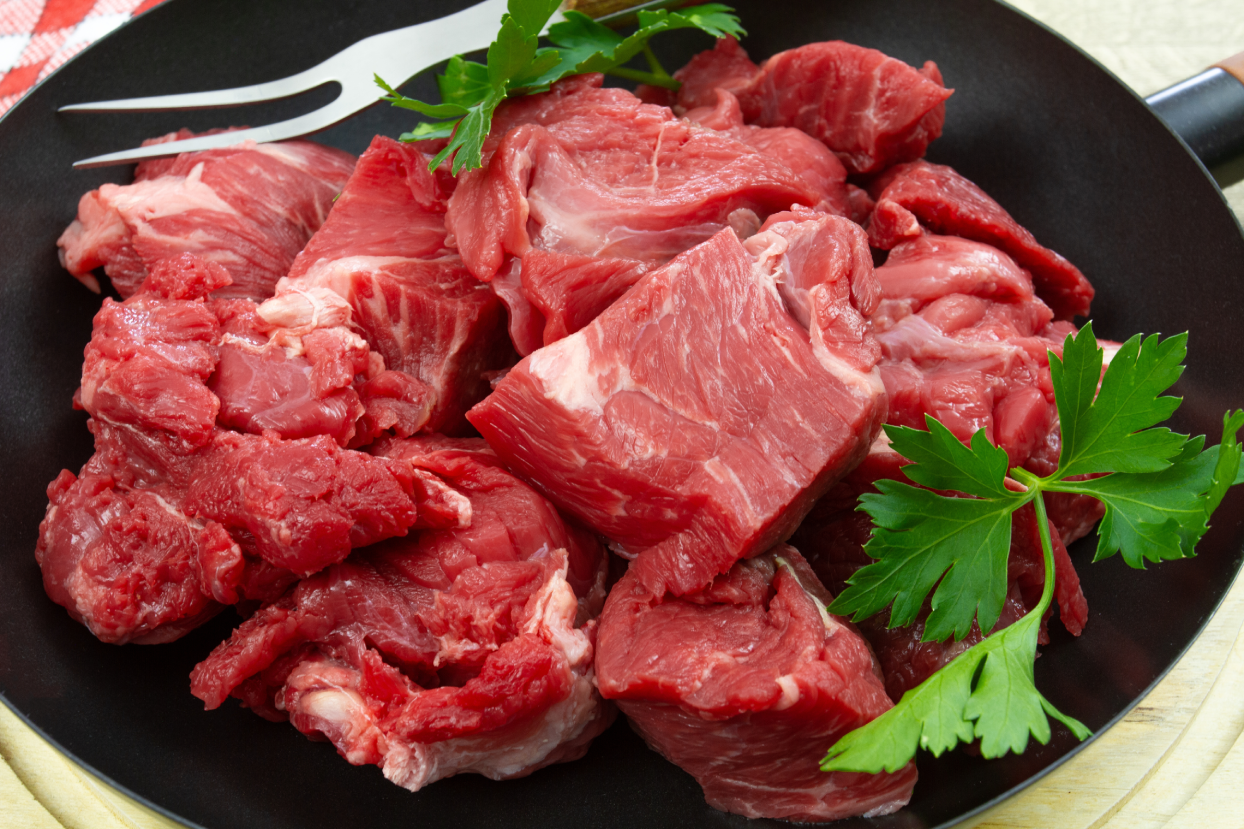Retail Meat
Retail Meat Display Lighting
Not only does light cause discoloration of meat, it also contributes to increased growth of pathogens such as Listeria and Salmonella by raising the surface temperature of exposed products.
Promolux® Safe Spectrum® lighting products are engineered to reduce the rates of growth of microbial pathogens compared to regular general lighting products.
"...discoloration and spoilage cost the retail industry $1.1 billion in sales in 1991."
The National Cattlemen’s Beef Association reports that as much as one billion dollars of retail sales are lost annually by US grocers due to the premature discoloration of beef. Years of research by university Meat Science departments conclusively demonstrate the connection between lighting and meat discoloration.


References
Meat References
"Gary C. Smith, Ph.D., from Colorado State University, estimates discoloration and spoilage cost the retail industry $1.1 billion in sales in 1991."
Improved Quality of Retail Beef Through Control of Bacterial Spoilage. G. Gordon Greer. Technical Bulletin 1984-13E. Lacombe, Alberta: Research Branch Agriculture Canada, 1984.
“The retail case life of fresh beef is usually limited to 2 to 3 days due to the development of undesirable surface discoloration. This reduction in color acceptability has been shown to be related to the growth of psychrotrophic bacteria at the meat surface. The retailer can improve the keeping quality of beef by reducing the number of bacteria initially contaminating the meat and by controlling the growth of organisms which are present.”
“In view of the importance of color to beef acceptability, the extent of bacterial-induced surface discoloration can be used as a measure of retail beef case life. As bacteria grow on the meat surface they accelerate the oxidation of meat pigments which results in a progressive deterioration of the acceptable red color and the appearance of varying degrees of brown surface discoloration until the steak is completely discolored.”
“The growth rate of a typical beef spoilage bacteria can double as the temperature of incubation increases from 1 to 5° C and can triple with a further increase to 10° C. Increased bacterial growth means reduced case life.”
“The actual surface temperature of steaks on retail display is much higher than that recorded at the blower thermometer. In this particular case, the blower thermometer indicated a temperature of -0.5° C while displayed steak surface temperatures were on the average about 8° C higher (7.3° C).”

“Another important consideration is the intensity and duration of display illumination. The display case in the studies described herein was illuminated with 150 watt incandescent, cool-beam floodlights to give a light intensity of about 80 foot-candles at the meat surface. Lighting was automatically timed to illuminate the display case for 12 hours/day."
"During this 12 hour period of illumination steak surface temperatures were found to be higher than in the absence of illumination. This is a type of ‘greenhouse effect’ in that the heat produced by radiant energy is absorbed by the meat and trapped between the polyvinyl wrap and the meat surface. Thus, although display illumination enhances the appearance of beef it is detrimental to keeping quality."
Beef Color as Related to Consumer Acceptance and Palatability. L.E. Jeremiah, Z.L. Carpenter, and G.C. Smith. Journal of Food Science, vol. 37 (1972): 476-479.
"Consumer studies have shown that physical appearance of a retail cut in the display case is the most important factor determining retail selection of meat products."
"Consumers select meat cuts primarily for leanness and then for appearance and freshness, with judgments for the latter two attributes based primarily on brightness of color (ASPC, 1964; Rhodes et al., 1955; Seltzer, 1955). The importance of attractive lean color was further emphasized by Shaw (cited by Nelson, 1964), who reported that 36.7% of the meat purchases from self-service counters were unplanned and that these impulse purchases were made primarily because of attractive appearance."
Determination of Bloom Time and Caselife of Nolan Ryan Ground Beef. R. Steiner, K.E. Belk, and G.C. Smith. 2001 Animal Sciences Research Report. Colorado State University, Fort Collins.
"Today's consumers are very demanding and quality driven, they have learned through experience that the desirable color of fresh/ground beef is bright cherry-red, and any deviation from what they perceive to be acceptable will not be purchased. Retailers discount or discard cuts that have color characteristics outside the marketable range resulting in economic losses to the company."
"Current estimates are that the value loss of fresh beef due to discoloration costs the retail beef industry 4 to 5 percent of the wholesale price or up to one billion dollars a year (Hoffman-La Roche Inc., 1993). Beef that is perfectly wholesome and safe to eat is discounted or thrown away every day because it has lost its bloom, or cherry red color, and become visually unappealing to consumers (Westcott et al.,1997)."
Factors Affecting Consumer Selection and Acceptability of Beef in Central Alberta. L.E. Jeremiah. Journal of Consumer Studies and Home Economics, vol. 5 (1981): 257-268.
“The reports of other workers (Danner, 1959; Mize & Stringer, 1959; Marsh, 1958) [found] that colour was the most important selection criterion."
"The fact that 41.9% of the consumers interviewed in the present study considered colour when making meat purchases substantiates that colour is one of the most important selection criteria."

Molecular Genetics
Molecular Genetics Could Shed New Light
Molecular Genetics Could Shed New Light on Beef Spoilage. Frances Nattress and Chris Yost. Research Report CABIDF-52. Canada Alberta Beef Industry Development Fund, 1999. Read the whole article here.
"Meat spoilage is a significant concern for the Canadian beef industry, with related costs estimated at $200 million per year."
"Previous research has shown that lactic acid bacteria are the primary bacteria in vacuum-packaged meat and that with extended refrigerated storage, their numbers attain high levels and spoilage ensues. Currently, vacuum packaging is used to market about 80 percent of Canadian beef to domestic and international markets."
